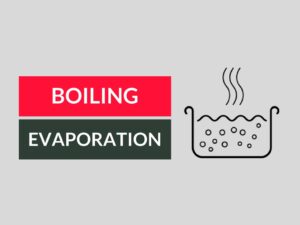Simmer vs. Boil: An In-depth Comparison
Have you ever wondered about the difference between simmering and boiling? These two cooking techniques involve heating liquids but at different temperatures and for different durations. In this article, we will explore the definitions, examples, and uses of simmering and boiling. Additionally, we will provide a comprehensive table showcasing the key differences between these cooking methods. So, let’s dive in!
What is Simmering?
Simmering is a gentle cooking technique that involves heating a liquid to a temperature just below the boiling point. The temperature range for simmering typically falls between 185°F (85°C) and 205°F (96°C). At this temperature, the liquid produces small bubbles around the edges of the pan but does not reach a rolling boil.
Examples of Simmering:
1. Simmering a pot of soup on the stove.
2. Allowing a stew to simmer for several hours to develop flavors.
3. Simmering a sauce to reduce its volume and thicken it.
Uses of Simmering:
1. Simmering is commonly used for slow cooking tough cuts of meat to make them tender.
2. It is ideal for cooking delicate ingredients, such as fish or poached eggs, as it prevents them from breaking apart.
3. Simmering can help infuse flavors into liquids, making it useful for brewing teas or creating stocks.
What is Boiling?
Boiling is a more intense cooking technique that involves heating a liquid to its boiling point. The boiling point of water, for instance, is 212°F (100°C) at sea level. At this temperature, rapid bubbles form and rise to the surface, causing the liquid to roll and churn.
Examples of Boiling:
1. Boiling pasta in a pot of water.
2. Boiling vegetables to soften them before further cooking.
3. Boiling eggs to achieve a desired level of firmness.
Uses of Boiling:
1. Boiling is commonly used for sterilizing canning jars and bottles.
2. It is an essential step in cooking various grains, such as rice or quinoa.
3. Boiling is often employed to blanch vegetables before freezing them.
Differences between Simmering and Boiling:
| Difference Area | Simmering | Boiling |
|---|---|---|
| Temperature Range | Between 185°F (85°C) and 205°F (96°C) | At or above 212°F (100°C) |
| Appearance | Small bubbles around the edges of the pan | Rapid bubbles rising to the surface |
| Level of Agitation | Mild agitation | Intense agitation |
| Energy Consumption | Requires less energy | Requires more energy |
| Cooking Time | Longer cooking time | Shorter cooking time |
| Intensity of Cooking | Gentler cooking method | More aggressive cooking method |
| Food Texture | Tends to keep food intact and tender | Can potentially cause food to break apart |
| Evaporation Rate | Slower rate of evaporation | Faster rate of evaporation |
| Suitable Dishes | Soups, stews, and sauces | Pasta, vegetables, and grains |
| Primary Purpose | Slowly cooking flavors together | Quickly heating ingredients or liquids |
Conclusion:
In summary, simmering and boiling are both essential cooking techniques with distinct characteristics. Simmering involves gentle cooking at lower temperatures over longer periods, while boiling encompasses more vigorous cooking at higher temperatures for shorter durations. The choice between simmering and boiling depends on the desired outcome, the ingredients, and the specific recipe. So, the next time you step into the kitchen, consider whether you need to simmer or boil based on your culinary needs.
People Also Ask:
Q: Can I simmer food instead of boiling it?
A: Yes, simmering can be used as an alternative to boiling for certain recipes. However, keep in mind that cooking times may be longer and some ingredients may require boiling to cook properly.
Q: Is it possible to boil something too vigorously?
A: Yes, boiling too vigorously can cause the liquid to evaporate too quickly, overcook delicate ingredients, and even create a mess if the liquid boils over. It is important to control the level of heat when boiling.
Q: Can I convert a simmering recipe to a boiling recipe, or vice versa?
A: It is possible to adjust cooking techniques between simmering and boiling, but it may affect the overall result. Simmering allows flavors to meld together slowly, while boiling delivers faster results. Pay attention to the cooking time and the desired texture of the ingredients.
Q: How can I prevent the liquid from boiling over?
A: To avoid a messy boil-over, ensure the pot has enough headspace for the liquid to expand. Additionally, adjusting the heat to maintain a gentle boil rather than a rapid one can help prevent spills.
Q: Does simmering or boiling retain more nutrients in food?
A: Simmering is generally considered better for retaining nutrients since the lower temperature and shorter duration help minimize nutrient loss. However, the impact on nutrients varies depending on the specific food and cooking time.


